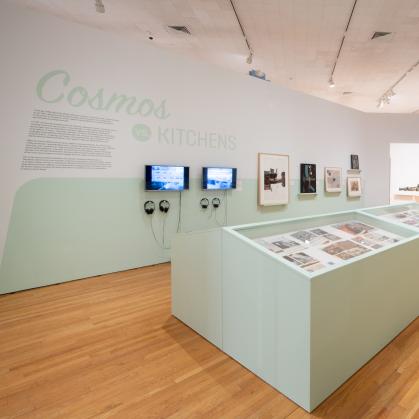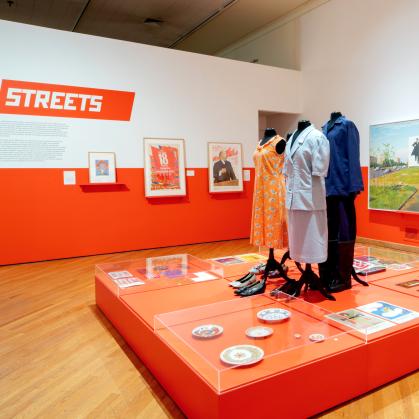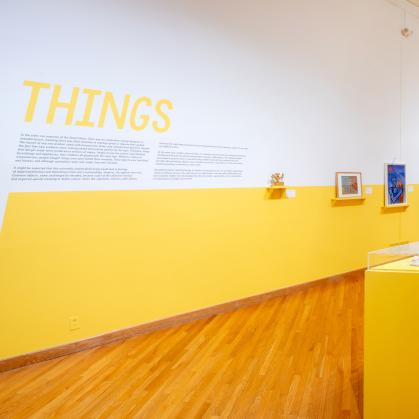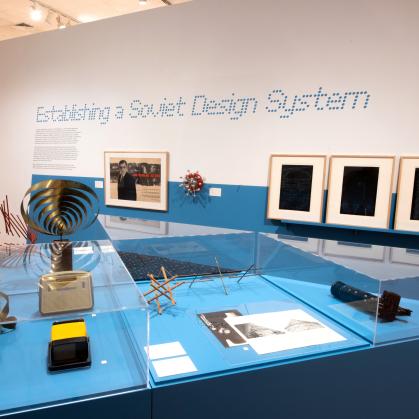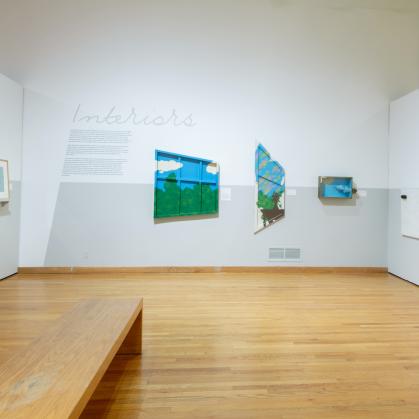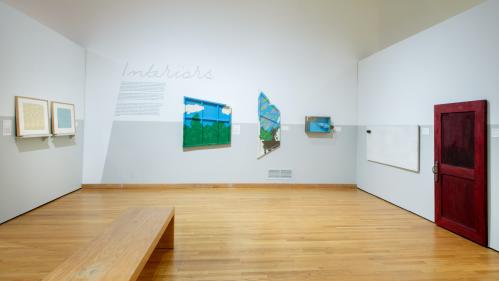
Interiors
In the Soviet economic system, the government was the sole owner and commissioner of official buildings and homes. In the 1920s and 1930s, communal living was widely promoted as a part of a vision for the “new” Soviet citizen. Proposals abounded for communal buildings that included dining halls, libraries, gyms, day care centers, laundries, communal baths, and other shared functions; the only individual spaces were for sleeping. Very few such projects were actually realized, however, and by the 1950s, many people still lived in converted apartments and barracks that had been built in the preceding decades to accommodate the influx of people to the cities.
Under Khrushchev, the government instituted a new program to build cheap apartment buildings containing basic amenities with individual units for families. Named “khrushchevki,” tens of thousands of these prefabricated buildings were constructed throughout the country, providing millions of families with new apartments. Inside the cookie-cutter building exteriors, the interiors were largely standardized, due to a limited selection of interior paint, wallpaper, tiles, and furniture.
The sameness of these surroundings, whose visual and psychological impact was shaped by wear and a lack of maintenance over time, deeply penetrated people’s consciousness and created strong emotional associations that many nonconformist artists explored. For example, Ilya Kabakov, one of the best-known nonconformist artists, made his name in the West by conveying the emotional impact of Soviet living space in his installations. Likewise, the portraits of walls, outlets, and ceramic tiles by Mikhail Roginsky, windows with painted landscapes by Ivan Chuikov, and “ready made” wallpaper pieces by Mikhail Chernyshov on view in this room are charged with meaning by their familiar textures and strong social and emotional associations.
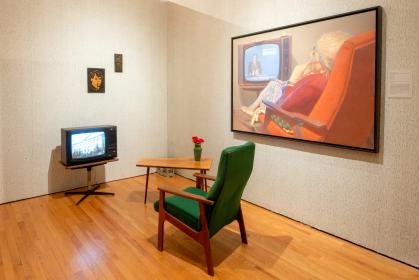
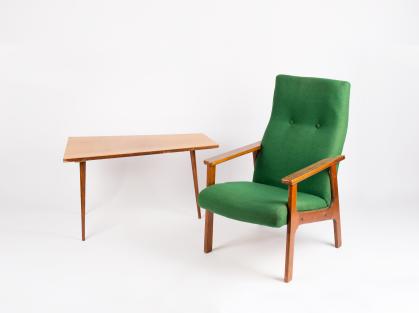
Coffee table, after 1965
Designed by V. Zaharov, A. Shilin, Y. Okulov, A. Belov
Manufactured by the Shatura Furniture Plant
Moscow Design Museum, Moscow
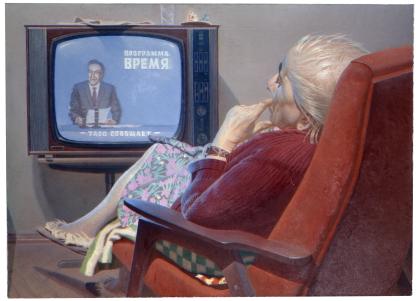
At the TV
Oil on canvas, 1982-1985
Zimmerli Art Museum, Norton and Nancy Dodge Collection of Nonconformist Art from the Soviet Union
© 2021 Artists Rights Society (ARS), New York / ADAGP, Paris
In subtle visual style, Erik Bulatov depicted the uncanny and prosaic elements of Soviet everyday life. This painting shows the domestic space of an old woman. She is watching a television showing Time, which was an hour-long daily news program for many years in the USSR. The program’s name hints at her state of mind, reflecting the loneliness and zastoi (stagnation) of her life. This is evocative of the collective experience of generations of Soviet citizens who felt that their nation existed in a state of timelessness.
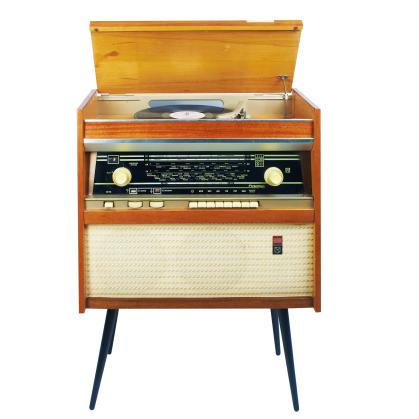
Designed by Adolf IrbitisManufactured by the Alexandr Popov Radio Manufacturing Plant
Moscow Design Museum, Moscow
The Rigonda-Mono was the trademark for stationary radiolas produced in the 1960s and 1970s in Riga. Its name was inspired by the imaginary island depicted in writer Vilis Lacis’s novel The Lost Homeland, a metaphor for the Latvian capital.
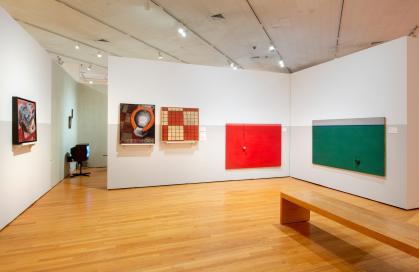
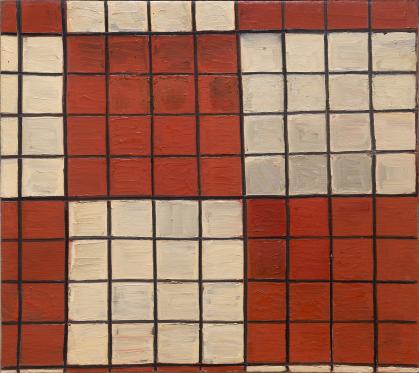
Tile
Oil on canvas, 1965
Zimmerli Art Museum, Norton and Nancy Dodge Collection of Nonconformist Art from the Soviet Union
In this work, intended to look like ceramic floor tile, Mikhail Roginsky explores the format of the minimalist grid within a Soviet context. Painted close up, the square tiles were a familiar fixture in bathrooms. Even in its simplicity, the painting has strong expressive undertones in the representation of an everyday object. Soviet reality appears gritty and unadorned, presenting a contrast to the heroic official style of Socialist Realism. The tile’s gridded design is both an abstract and a realistic form, challenging the traditions of modernist painting exemplified by Mondrian in the 1920s and the minimalists of the 1960s.
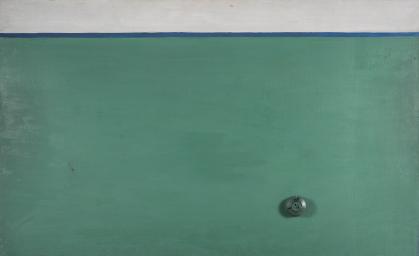
Green Wall
Oil on canvas mounted on panel, with electrical outlet, 1965
Zimmerli Art Museum, Norton and Nancy Dodge Collection of Nonconformist Art from the Soviet Union
